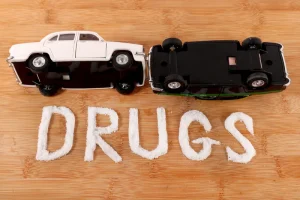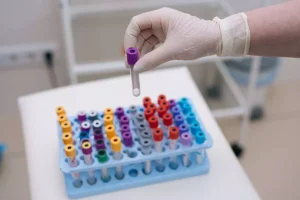
Though scientists agree that alcohol can play a role in the development of certain types of cancer, kidney cancer isn’t one of them. A person is at risk of different complications depending on the underlying cause of the kidney pain. A person may feel intense back pain or pain in their genitals or stomach as the body attempts to pass the stone. If the body does not pass the stone, a person can develop a severe infection or blockage. The timing of the pain could be a coincidence, or the alcohol could have intensified an existing problem. There are no specific studies suggesting that certain types of alcohol are worse on the kidneys than others.
Kidney injury secondary to alcohol hepatitis, cirrhosis, and other conditions
This could also be a significant factor contributing to ethanol-induced mitochondrial dysfunction in the kidneys (Harris et al. 2015). In summary, there is no exact evidence that alcohol consumption aggravates the state of CKD or increases all-cause mortality in CKD, and the protective effect of abstinence on such patients is unclear. Although many studies stated that people should not start drinking for any reason, and alcohol consumption can increase disease risk [125], we also cite many studies demonstrating the protective effects of light-to-moderate alcohol consumption in our review. Second, the proteinuria detection and diagnosis of CKD can also affect the credibility of the conclusion. In most studies, proteinuria was detected by a single measurement using a dipstick test. Although studies have proven that even a single dipstick indication of proteinuria is a significant risk for CKD and ESRD [122], a single dipstick detection can be biased by numerous confounders.

Considerations When Drinking Alcohol with Chronic Kidney Disease
Coconut water, apple cider vinegar drinks, and hot chocolate are great options. You can make mocktails in a fancy glass if you want to drink something special, especially in social situations. Hydronephrosis is the result of one or two swollen kidneys due to an accumulation of urine.

Association of monthly frequency of alcohol consumption and binge drinking with change in the eGFR over 12 years
Increased gastrointestinal permeability and endotoxin load may lead to alcoholic steatohepatitis resulting in excessive immunoglobulin A (IgA) load (due to increased intestinal production and decreased hepatic IgA clearance). Renal microcirculatory alterations in advanced liver cirrhosis leads to hepatorenal syndrome. Alcohol-induced skeletal muscle damage leads to excessive amounts of circulating myoglobin, causing renal tubular injury as a result of increased oxidative stress. Due to the development of alcoholic cardiomyopathy, chronic renal hypoxia develops, activating the renin–angiotensin–aldosterone system (RAAS), which in turn leads to further free radical production and to the propagation of fibrotic pathways. As an example, Puddey and colleagues (1985) evaluated the effects of hormones that regulate kidney function.
Furthermore, approximately 10% of ingested ethanol is excreted by the kidneys in its original form [21]. Therefore, excessive alcohol consumption places a major strain on the normal metabolic processes of the kidneys. Blood in the urine (hematuria) after drinking alcohol may be a sign of kidney damage. Other possibilities include urinary tract infection (UTI), bladder inflammation, cancer, liver disease, or other underlying medical conditions. In fact, some studies show drinking alcohol has no association with kidney diseases (9).

- Physically, the kidneys have several enzymes with antioxidant capacities, including superoxide dismutase (SOD), catalase (CAT), and glutathione peroxidase, which can balance various oxidative processes.
- The NKF adds that most people in the United States who have both liver disease and kidney dysfunction are alcohol dependent.
- And in rare cases, binge drinking — five or more drinks at a time — can cause a sudden drop in kidney function called acute kidney injury.
- Kidney pain usually appears in the back, on either side of the spine, just under the ribs.
- The underlying mechanisms involved in the development and progression of HRS are incompletely understood, although it is plausible that the altered balance between vasoconstrictor and vasodilator factors plays a significant role (Lenz 2005).
We think that the enhancement of CAT activities may not come from high concentration of ethanol, but rather from the compensatory improvement of antioxidant capacity after the intervention with low-concentration ethanol in the early stage. For instance, a high intake of sugary beverages or high-sodium foods may strain the kidneys (1, 2), potentially leading to kidney damage how alcohol affects the kidneys over time. Binge drinking, defined as having four or more drinks at a time, may result in a serious condition known as acute kidney injury. This occurs when the toxins from alcohol build up in your blood quickly and your kidneys are not able to maintain the right fluid balance. Preventing the risk of kidney disease entails taking care of your heart and weight.
People older than age 50 overcome suppression of ADH more quickly than their younger counterparts do, despite reaching similar serum electrolyte concentrations after alcohol consumption. In older people, ADH levels sharply increase following alcohol intake, perhaps in part because sensitivity to increased electrolyte concentration is enhanced with age. It is not known whether chronic alcoholic patients experience a similar difference in the ADH response as they age, however. Regular, heavy alcohol use can also be harmful to your kidneys over time. According to the National Kidney Foundation, regular heavy drinking can double the risk of chronic kidney disease. Abstinence is one of the characteristics of human drinking habits; many doctors will encourage patients to stop drinking, which may be good for their health [121].
Effect of body mass index on the association between alcohol consumption and the development of chronic kidney disease
Investigators have advanced several theories suggesting the involvement of a constellation of hormonal, neural, and hemodynamic mechanisms (Epstein 1996; Laffi et al. 1996). The traditional hypothesis holds that the kidneys of cirrhotic patients retain sodium in response to ascites that develops when liver dysfunction causes blood vessels to expand beyond available plasma volume (i.e., the “underfill” theory). In contrast, the “overflow” theory postulates that ascites follows when the kidneys retain sodium in response to signals sent by a dysfunctional liver to expand plasma volume. The answer to this version of the “chicken-and-egg” question remains to be elucidated. Alcohol can induce abnormally high phosphate levels (i.e., hyperphosphatemia) as well as abnormally low levels. Alcohol consumption apparently leads to excessive phosphate levels by altering muscle cell integrity and causing the muscle cells to release phosphate.
What does kidney pain from alcohol feel like?
Drinking alcohol if you already have kidney stones may cause them to move quickly. “Excessive alcohol consumption can cause nerve damage and irreversible forms of dementia,” Dr. Sengupta warns. If you drink every day, or almost every day, you might notice that you catch colds, flu or other illnesses more frequently than people who don’t drink. That’s because alcohol can weaken your immune system, slow healing and make your body more susceptible to infection. Pancreatitis can be a short-term (acute) condition that clears up in a few days. But prolonged alcohol abuse can lead to chronic (long-term) pancreatitis, which can be severe.
Ensuring no one faces kidney disease alone
Moreover, many patients were excluded from the long-term observational studies because they did not attend routine annual health checkups. Although the researchers do not analyze the reasons why people are lost to follow-up, we cannot ignore the possibility that some patients were diagnosed with CKD and had begun regular medical treatment in another medical center. We https://ecosoberhouse.com/ also realize that previous studies did not include an adequate number of heavy drinkers, especially female heavy drinkers. Therefore, the relationship between heavy alcohol consumption and CKD may be affected by this sampling bias [16,79,117]. One of the reasons for this sex difference might be the different pharmacokinetics of ethyl alcohol between men and women.